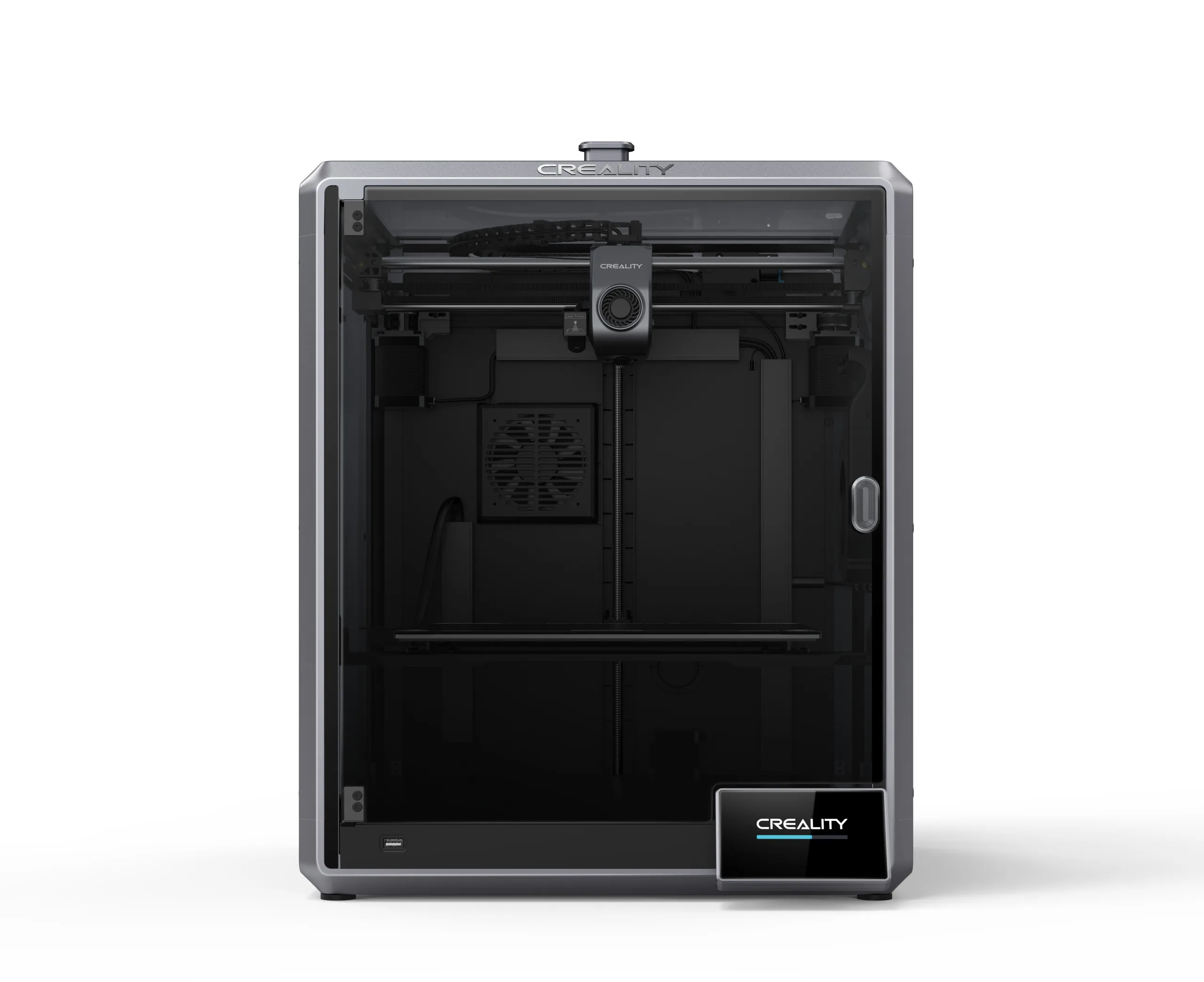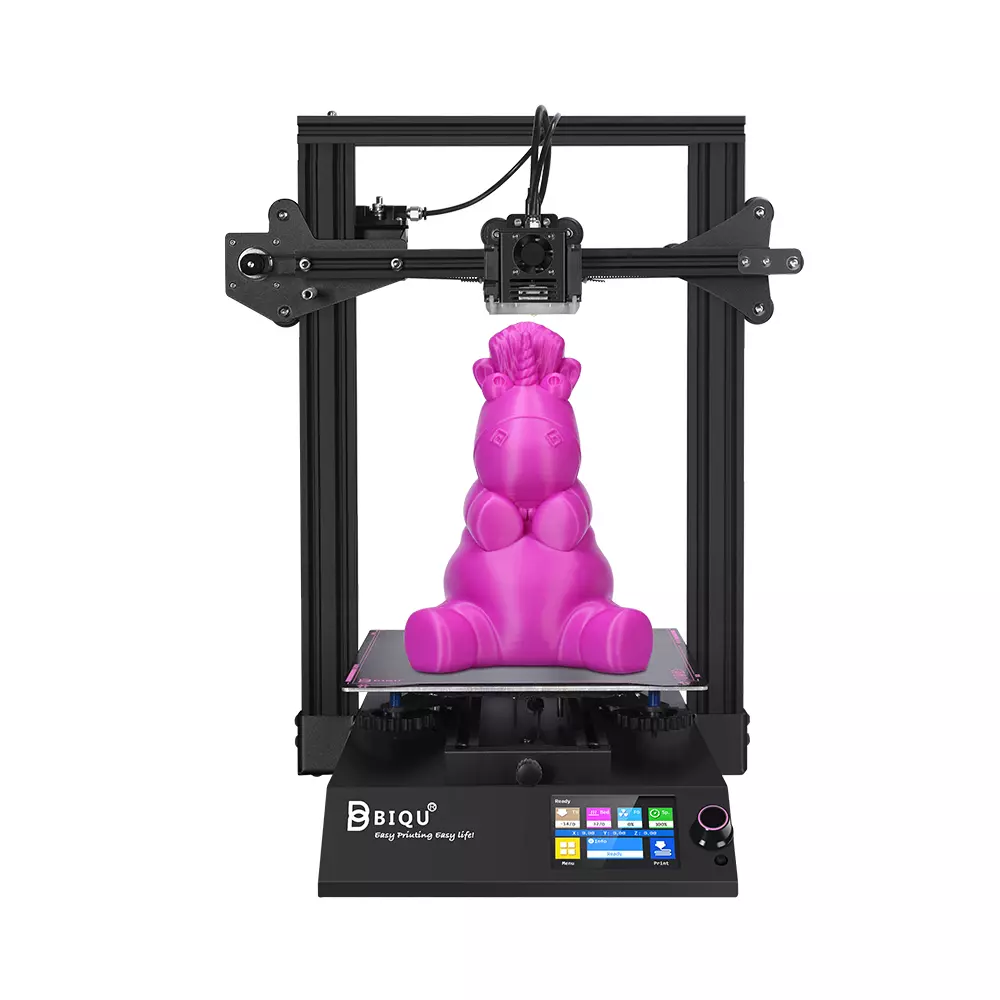Compare K1 Max vs BIQU B1
Comparison between the best 3D printers
Choose the best 3D printer at the best price. The cheapest 3D printers are here.
Buy a 3D printer here with 3D Fila.
 |
 |
|
| Model | K1 Max[BUY K1 Max] |
BIQU B1 |
| Printing Material | Filament | Filament |
| Buy Filament for Creality 3D K1 Max | Buy Filament forBigTreeTech BIQU B1 | |
| Estimated price | $1300,00 | $269,00 |
| Manufacturer | Creality 3D | BigTreeTech |
| Release Year | 2023 | 2020 |
| Print Volume [mm] | 300x300x300 | 235x235x270 |
| Printer Size [mm] | 435x462x526 | 412x402x492 |
| Weight [kg] | 18 | 8,00 |
| Power Loss Recovery | YES | YES |
| Enclosed printer | YES | NO |
| Bed Leveling | Automatic | Manual |
| Filament End Sensor | YES | YES |
| Bed type | Heated | Heated |
| Power supply system | Direct Drive | Bowden |
| Standard nozzle | 0,4 | 0,4 |
| Maximum Nozzle Temperature [°C] | 300 | 250 |
| Maximum Bed Temperature [°C] | 100 | 100 |
| Maximum printing speed [mm/s] | 600 | 100 |
| Filament holder | YES | YES |
| Camera for supervision | YES | YES |
| Recommended filaments | ABS, PLA, PETG, TPU, PA, ASA, PC, PLA-CF, PA-CF, PET-CF | PLA, TPU, ABS, PETG |
| Recommended slicers | Creality Print, Cura, Simplify, Slic3r, IdeaMaker e outros | Cura, Simplify, Slic3r |
| Maximum Resolution [mm] | 0,1 | 0,1 |
| Processor | 32 Bits BTT SKR V 1.4 | |
| Display | Display touchscreen 4,3'' | Touchscreen TFT 3,5'' |
| Power Supply | 24V / 360W | |
| Connectivity | USB / Wi-Fi / Ethernet | SD / USB |
| Operating systems | Windows, Mac, Linux | Windows, Mac, Linux |
| Date of registration in the system | 2023-12-01 | 2021-04-14 |
| Release date | 2023 | 2020 |
| Extra features | The Creality K1 Max stands out as a fast Core XY 3D printer with a large build volume of 300 x 300 x 300 mm. It is fully enclosed and equipped with AI sensors to prevent print failures. This model has a smooth and flexible PEI build platform, and uses an automatic leveling system with LIDAR, as well as a filament run-out sensor. LAN, Creality Cloud and USB Flash Disk connectivity are available, as well as a 4.3-inch touchscreen interface. The K1 Max is robust, weighing in at 18 kg, and includes an AI camera and limited version of the Klipper firmware. Its motion system is solid and the printer is efficient with high-temperature filaments, but it is not silent. Assembly is 99% complete, requiring only minor adjustments before use. | The BIQU B1 is an advanced 3D printer with a silent 32-bit BTT SKR V1.4 motherboard and ARM Cortex-M3 CPU, offering DIY interfaces (I2C, SPI, WiFi) and dual Z-axis. Its dual BTT B1 TFT35 V3.0 operating system allows real-time monitoring and multiple printing modes, including G-code visualization effects. It stands out for its BIQU SSS (Super Spring Steel), ensuring easy model adhesion and simplified removal, with the possibility of using it on both sides. It includes a filament sensor, automatically pausing printing in case of filament breakage. The multicolored RGB lights integrated into the hotend allow you to view the printing status even at night. Additional notes include the need for a BIQU-specific Type-C cable and extra interfaces for smart filament sensor and BL Touch. |
| Support for multiple colors and materials (AMS and CFS) | NO | NO |
Notes * |
||
| Cost-benefit | 7 / 10 | 7 / 10 |
| Hardware | 4.8 / 10 | 2 / 10 |
| Tela | . | . |
| Print volume | 4 / 10 | 3 / 10 |
| Performance | 5 / 10 | 1 / 10 |
| [BUY K1 Max] |
Conclusion |
| In comparing the Creality K1 Max and the BIQU B1, significant differences emerge that cater to diverse user needs and budgets. The K1 Max, as a newer model released in 2023, offers advanced features such as a larger print volume, automatic bed leveling via LIDAR, and a fully enclosed design that enhances printing reliability and quality. Its impressive maximum printing speed and capability to handle high-temperature filaments make it a powerhouse suitable for both hobbyists and professionals. The enhanced connectivity options, including Wi-Fi and LAN, coupled with a user-friendly touchscreen interface, further elevate its usability. Despite its higher price point, the K1 Max’s solid performance and efficiency justify the investment for users who prioritize advanced functionality and larger projects. Conversely, the BIQU B1, introduced in 2020, presents an attractive option for those entering the world of 3D printing or those who operate within a tighter budget. Although it lacks some of the advanced features of the K1 Max, it still provides essential functionalities like auto-pause for filament issues and a heated bed, making it a capable machine for a range of materials. The B1 is lighter and more compact, which may appeal to users with limited space. Overall, the choice between these two printers hinges on the intended use and budget. For users seeking high performance and the latest technology, especially for large or complex projects, the K1 Max emerges as the superior option despite the higher cost. On the other hand, for those looking for a reliable and economical entry into 3D printing, the BIQU B1 remains a commendable choice, delivering solid results at a more accessible price point. Ultimately, hardware capabilities and budget considerations lead to a clear distinction: the K1 Max excels in versatility and speed, while the BIQU B1 offers a more basic, yet functional, printing experience. |

